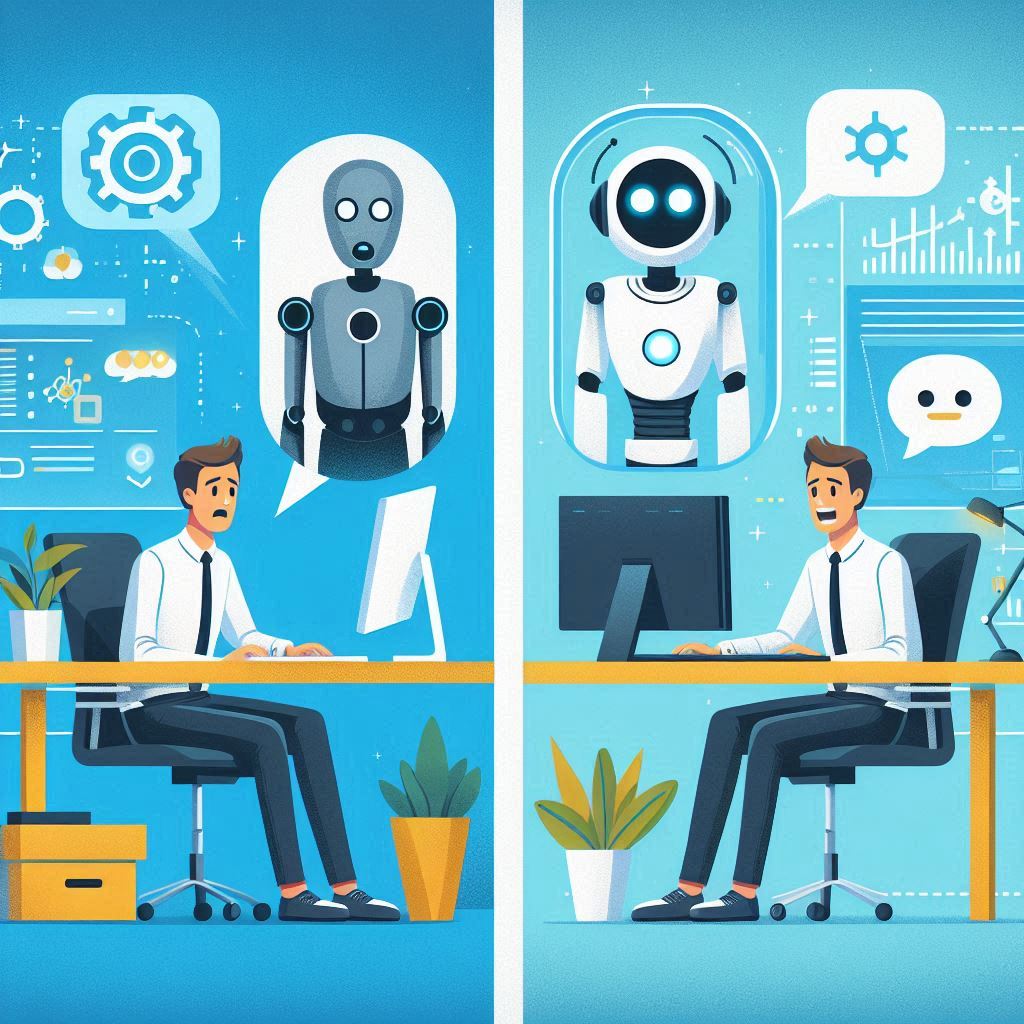Introduction
Imagine this: You walk into your office, and instead of spending hours sorting emails or creating spreadsheets, an AI tool has already done it for you. Sounds like a dream, right? Or maybe… a nightmare?
According to a 2023 McKinsey report, up to 800 million jobs could be lost to automation by 2030—but at the same time, new jobs are being created faster than ever, thanks to AI.
So what’s really going on?
In this blog, we’ll break down what AI in the workplace actually means, how it’s already helping businesses, and whether it’s a threat—or a tool—to your job. You’ll walk away with real examples, practical tips, and a clearer picture of your future at work.
What Is AI in the Workplace?

Think of Artificial Intelligence (AI) as a really smart digital assistant that can learn patterns, solve problems, and even make decisions—sometimes faster and better than humans.
In the workplace, AI isn’t some futuristic robot walking around with a clipboard. It’s more like the software you’re already using: think of email filters, chatbots, or tools like Grammarly suggesting better sentences as you type.
AI works by analyzing massive amounts of data and then predicting what comes next. For example:
- A recruitment tool can scan thousands of resumes in seconds.
- A customer service chatbot can answer FAQs 24/7.
- A marketing tool like HubSpot can predict the best time to send your emails.
In short, AI doesn’t have to replace you—it can assist you, just like a super-efficient colleague.
Why It Matters for Businesses
Businesses today are under more pressure than ever to be fast, efficient, and personalized. AI helps tick all those boxes.
Here’s how AI is already making work easier and smarter:
🕒 Saves Time
AI automates boring, repetitive tasks. No more spending hours inputting data or scheduling social media posts. Tools like Zapier and Notion AI handle it for you.
💰 Reduces Costs
By automating customer support or managing supply chains, businesses can operate with fewer errors and lower costs.
🚀 Boosts Growth
AI can uncover insights from customer data that help companies personalize marketing, predict trends, and improve products. It’s like having a market research team that never sleeps.
Whether you’re running a bakery or a tech startup, AI gives you an edge—if you know how to use it.
Real Examples or Stories
Let’s look at two real-world examples of AI in action:
🛍️ E-commerce: Amazon’s Recommendation Engine
Ever wondered how Amazon always knows what you might want to buy next? That’s AI at work. Its recommendation system uses your browsing and buying history to personalize your shopping experience—and it drives 35% of Amazon’s total revenue.
🛠️ Small Business: Lola’s Digital Marketing
Lola, a small business owner in India, used AI-powered tools like Canva’s Magic Write and ChatGPT to create her monthly social media calendar in just a few hours. Before AI, she spent 2–3 days doing the same thing—and paid a freelancer. Now she saves time and money.
These are just a few of the millions of use cases popping up across industries.
How to Get Started
You don’t need to be a tech expert or have a big budget to use AI. Here’s how to dip your toes in:
✅ Step 1: Identify Repetitive Tasks
Think about what takes up a lot of your time: replying to emails, making reports, managing calendars, etc.
🔧 Step 2: Try Easy AI Tools
Start with beginner-friendly (often free) tools:
- Grammarly for writing assistance
- ChatGPT for brainstorming or drafting content
- Canva Magic Write for social media posts
- Trello + Butler for automated task management
🚀 Step 3: Track the Results
Use a spreadsheet or simple tracker to monitor how much time you’re saving or how your performance improves.
The key is to start small, stay curious, and keep learning.
What to Watch Out For
AI is powerful, but it’s not magic. Here are a few things to be mindful of:
⚠️ Overdependence
Relying too much on AI can reduce your own critical thinking or creativity. Use it to support—not replace—your skills.
🧱 Data Privacy
Make sure you understand where your data is going. Not all AI tools are transparent, so read privacy policies carefully.
❌ Job Displacement (Yes, It’s Real)
Some jobs will change or disappear. But new roles will also emerge: AI trainers, prompt engineers, data ethicists, and more.
The best way to stay safe? Keep upskilling. The more adaptable you are, the more valuable you’ll be.
Conclusion
AI is not here to take your job—it’s here to change the way you work. Whether that means automating the boring stuff or unlocking new opportunities, the future of work is already happening.
The key is to adapt, learn, and lead the change instead of fearing it.
So, will AI replace your job? Only if you let it.
Have you tried using AI in your daily work or business?
Tell me in the comments! I’d love to hear your story—or help you get started.👉 Or check out our blog: “Top 5 Free AI Tools Every Small Business Should Try in 2025”